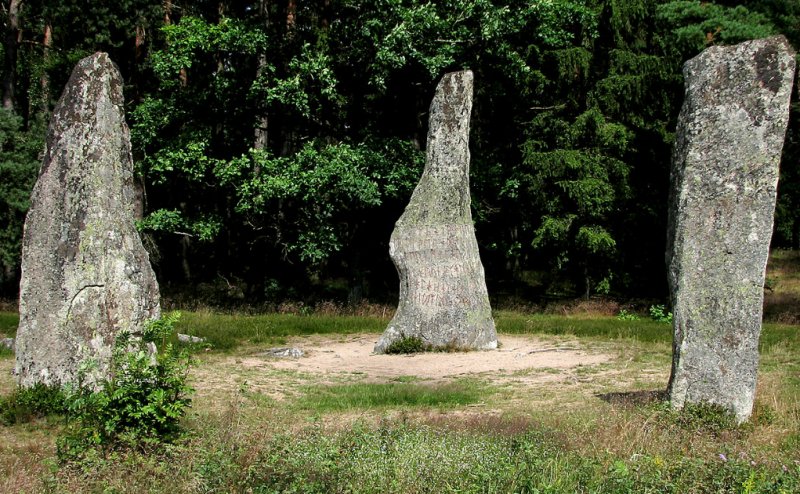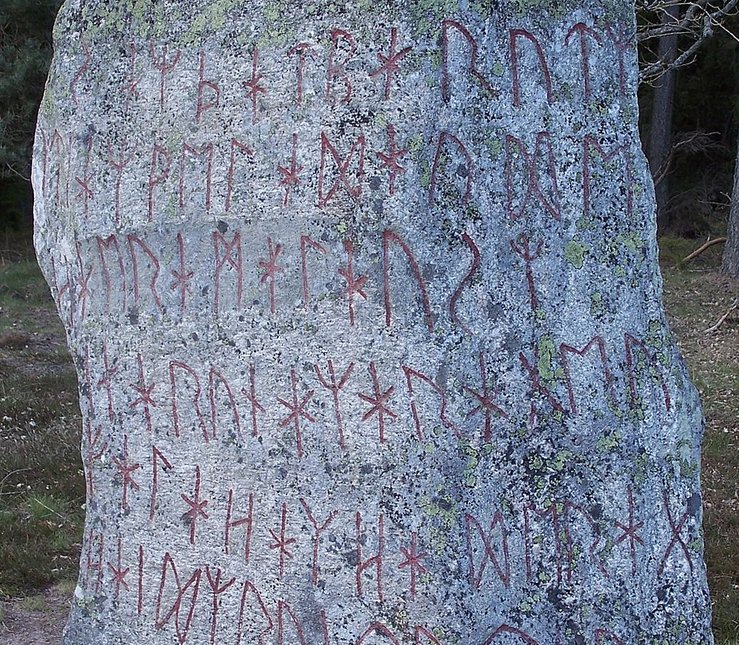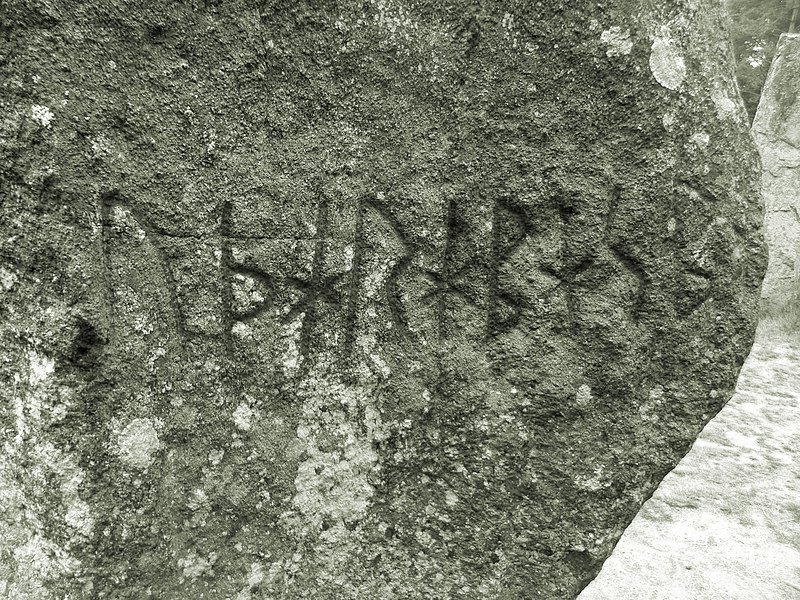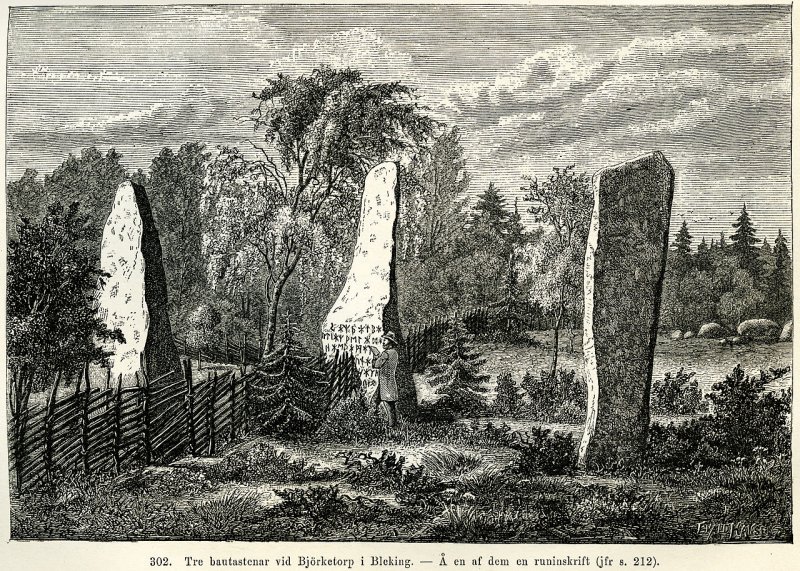Björketorp Runestone With Frightening Message Is Still Untouched In Blekinge, Sweden
A. Sutherland - AncientPages.com - The Björketorp Runestone in Blekinge, Sweden, is part of a burial ground with menhirs standing alone and forming stone circles.
Dated to about 400-700 AD, the standing stone has never been moved, so it remains in its original place.
Björketorp Runestone in Blekinge, Sweden. Image credit: Joachim Bowin - CC BY-SA 3.0
Perhaps it is not so strange that the Björketorp Stone remains in its original place.
Who dares to move a stone where there is a curse engraved with runes?
Rune-magic formulas were common in the Viking Age. The curse formula on the Björketorp Runestone says that ' "whosoever breaks down or in any way 'disturbs the holy site is cursed unto death by the deceptive power of the runemaster." The magical means were used by the unknown runemaster to record on this stone the death sentence and to warn.
The runestone stands in the forest clearing on the edge of a vast, old burial ground, and is accompanied by two other slightly lower menhirs with no inscriptions. No doubt, the three of them form Sweden's impressive landmark.
A burial ground - consisting of eleven clearly visible ancient remains - dates to the Iron Age. In addition, nearby, there are also two-judge rings, a round and a four-sided stone setting, and seven lower raised stones. The site is located at the intersection of three villages Listerby, Björketorp, and Leråkra.
The curse-like inscription covers one of the world's tallest runestones, measuring 4.2 m. One can say the stone is not only the tallest but also mysterious because of the text it tries to convey.
Björketorpsstenen (Björketorp Stone) at Björketorp, in Ronneby, Blekinge, Sweden - Image credit: Henrik Sendelbach - CC BY-SA 3.0
The runestone and the two others were already mentioned in the 15th century. They namely served as a boundary mark between the three parishes of Edestad, Listerby, and Hjortsberga. At that time, they were called" Galta Stene."
It's worth mentioning that the three menhirs we talk about are the so-called "bautastenarna" (Bauta Stones). Bauta (in prehistoric (Old Norse) means upright memorial stone without inscription. The word is no longer an archaeological term, but today means 'upright stone.'
Only one of the three bauta stones bears a runic inscription created from runes belonging to the older Runic row. In Blekinge, at least five such ancient runestones are known and are dated to the 5th - 6th AD. The inscription on the Björketorp Runestone has no personal name.
Unknown Author Of Curse-Liked Inscription
An unknown prehistoric artisan covered the stone with an inscription, using the oldest form of the runic alphabet, the Elder Futhark (150 - 800 AD), with 24 runes.
The Elder Futhark Runic alphabet was a writing system used by Germanic people for Northwest Germanic dialects during the Migration Period (300–800 AD) or even later. From the 2nd to the 10th centuries, inscriptions were found on various ancient artifacts, including amulets, jewelry, weapons, tools, and runestones in Scandinavia.
The Runestone of Björketorp also contains a mysterious "curse," which does not promise well for an individual who has problems in his mind.
The stone was probably intended to safeguard the burial ground from grave robbers.
The inscription reads: Obverse: hAidz * runo • ronu • fAlAhAk • hAiderA • ginArunAz • ArAgeu • hAerAmAlAusz •utiAz • welAdAude • sAz • þAt • bArutz Obverse: uþArAbA * sbA
It translates as follows:" Mysterious, powerful runes I carved here. Powerful runes. Eternal anger should torment The One who desecrates this monument. He is to die a homesick death. I speak his doom."
The Runestone stands on a burial ground in Björketorp, Listerby Parish, Ronneby municipality, Blekinge, Sweden. Image credit: Achird - CC BY-SA 3.0
Another little different translation is:
"The secret of mighty runes I hid here, powerful runes. Whoever breaks this memorial will be constantly tormented by anger. Treacherous death should hit him. I trace corruption..."
On the back of the stone is written::
"Sinister prophecy" (or" Ominous prophecy."
It is an old curse that was once called "galder."
The purpose of this runic inscription has long been debated. Scholars are not in agreement on the purpose of the Runestone.
The Björketorp runestone (DR 360) in Listerby parish, Ronneby municipality, Blekinge, Sweden. Woodcut by Evald Hansen (1840–1920), figure 302 on Page 211 of Sweden's hednatid (1877) by Oscar Montelius. Public Domain
It has been suggested that the Runestone is grave and that the curse is intended to protect it. However, in 1914, archaeological excavations did not present any finds connected with the runestone or neighboring stone circle. Also doubtful is whether the Björketorp Stone is a grave or a so-called Cenotaph, i.e., a burial facility for a person whose remains have been lost or buried elsewhere.
One theory is that the Björketorp Stones in Blekinge stand on an old cult site from the 600s dedicated to the god Odin (or fertility). Another possibility is that the standing stone once marked a border between the Swedes and the Danes.
Even today, we know little about the Björketorp Stone in Blekinge.
Additionally, we can add that On the ridge further north in the area, there are many ancient remains from both the Bronze and Iron Ages. These findings attest to a rich ancient settlement. In a gravel pit directly east of the burial ground, archaeologists found a funerary urn next to a remnant stone. The dead man was burned, and his bones were placed in the urn.
A sword, spear, and knife were found next to him in his tomb.
Written by – A. Sutherland - AncientPages.com Senior Staff Writer
Updated on January 21, 2024
Copyright © AncientPages.com All rights reserved. This material may not be published, broadcast, rewritten or redistributed in whole or part without the express written permission of AncientPages.com
Expand for referencesReferences:
Hofberg Herman, Genom Sveriges bygderKarlén, L. Runstenar i Sverige
The Swedish National Heritage Board (Swedish: Riksantikvarieämbetet; RAÄ)
Barddal, Jóhanna: Björketorpstenens "utiar weladaude". Sydsvenska ortnamnssällskapets årsskrift 1998
More From Ancient Pages
-
 Mysterious Ancient Mass Grave With Roman Skeletons Baffles Archaeologists
Archaeology | Sep 25, 2017
Mysterious Ancient Mass Grave With Roman Skeletons Baffles Archaeologists
Archaeology | Sep 25, 2017 -
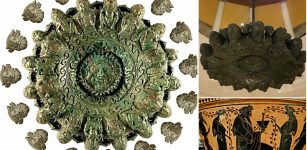 Etruscan Beautiful Bronze Lamp of Cortona – Studied
Artifacts | Apr 10, 2024
Etruscan Beautiful Bronze Lamp of Cortona – Studied
Artifacts | Apr 10, 2024 -
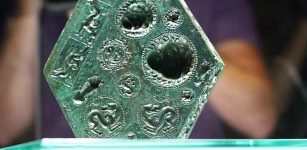 Unique 2,000-Year-Old Hexagonal-Shaped Bronze Matrix Of Sarmizegetusa Regia, Romania
Artifacts | Jan 7, 2016
Unique 2,000-Year-Old Hexagonal-Shaped Bronze Matrix Of Sarmizegetusa Regia, Romania
Artifacts | Jan 7, 2016 -
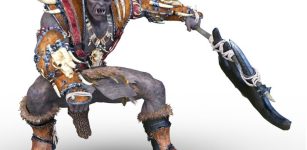 Fomorians In Irish Myths And Legends: Race Of Demonic Giants Who Inhabited Ireland And Scotland
Celtic Mythology | May 20, 2017
Fomorians In Irish Myths And Legends: Race Of Demonic Giants Who Inhabited Ireland And Scotland
Celtic Mythology | May 20, 2017 -
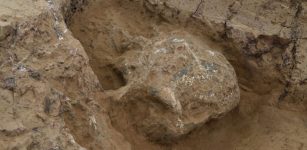 Intriguing Million-Year-Old Human Skull Offers Key Clues To Our Evolution
Archaeology | Sep 30, 2022
Intriguing Million-Year-Old Human Skull Offers Key Clues To Our Evolution
Archaeology | Sep 30, 2022 -
 Visit The Palace Where Alexander The Great Was Born In Pella
Archaeology | Oct 21, 2020
Visit The Palace Where Alexander The Great Was Born In Pella
Archaeology | Oct 21, 2020 -
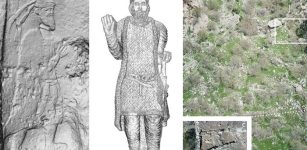 Mysterious 2,000-Year-Old Lost City Of Natounia May Have Been Found!
Archaeology | Jul 20, 2022
Mysterious 2,000-Year-Old Lost City Of Natounia May Have Been Found!
Archaeology | Jul 20, 2022 -
 Hundreds of Monumental ‘Kites’ Spotted in Arabian Desert
Archaeology | Sep 12, 2022
Hundreds of Monumental ‘Kites’ Spotted in Arabian Desert
Archaeology | Sep 12, 2022 -
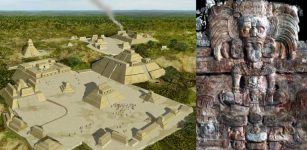 Mysterious Maya Snake Kings And Their Powerful Kingdom In The Jungle Reveal More Ancient Secrets
Civilizations | Apr 23, 2018
Mysterious Maya Snake Kings And Their Powerful Kingdom In The Jungle Reveal More Ancient Secrets
Civilizations | Apr 23, 2018 -
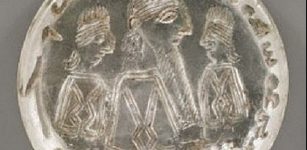 Mani: Apostle Of Light And His Ancient Rock Crystal Seal
Featured Stories | Jul 2, 2018
Mani: Apostle Of Light And His Ancient Rock Crystal Seal
Featured Stories | Jul 2, 2018 -
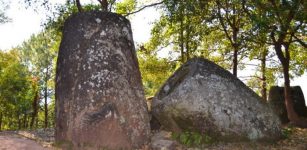 Mystery Of The Giant Laos Jars Continues – New Discoveries Reported By Scientists
Archaeology | Apr 19, 2021
Mystery Of The Giant Laos Jars Continues – New Discoveries Reported By Scientists
Archaeology | Apr 19, 2021 -
 Gryla: Cannibalistic, Evil Troll And Her Sons ‘Yule Lads’ – In Icelandic Folklore
Christmas Traditions | Dec 11, 2019
Gryla: Cannibalistic, Evil Troll And Her Sons ‘Yule Lads’ – In Icelandic Folklore
Christmas Traditions | Dec 11, 2019 -
 2000-Years Old Road Was Discovered In Manisa Province,Turkey
Archaeology | Aug 14, 2017
2000-Years Old Road Was Discovered In Manisa Province,Turkey
Archaeology | Aug 14, 2017 -
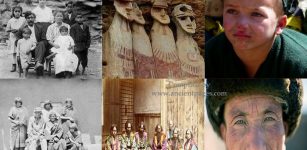 6 Ancient Minorities That Intrigue Scientists
Civilizations | Apr 26, 2024
6 Ancient Minorities That Intrigue Scientists
Civilizations | Apr 26, 2024 -
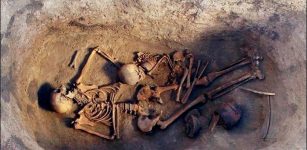 Mystery Of The Ancient Okunev Culture: Skeleton Of 4,500-Year-Old Noblewoman With Links To Native Americans Discovered In Siberia
Archaeology | Sep 9, 2016
Mystery Of The Ancient Okunev Culture: Skeleton Of 4,500-Year-Old Noblewoman With Links To Native Americans Discovered In Siberia
Archaeology | Sep 9, 2016 -
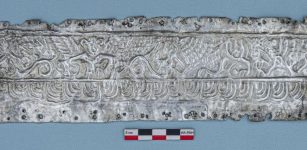 Unique Plate Of Winged Scythian Gods And Walking Griffons Discovered In Middle Don
Archaeology | Nov 19, 2021
Unique Plate Of Winged Scythian Gods And Walking Griffons Discovered In Middle Don
Archaeology | Nov 19, 2021 -
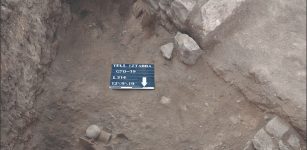 Ancient Town’s Destruction Dated With Help Of Chicken Bones And Snail Shells
Archaeology | Aug 17, 2022
Ancient Town’s Destruction Dated With Help Of Chicken Bones And Snail Shells
Archaeology | Aug 17, 2022 -
 Chocolate Was A ‘Hot Property’ In 17th Century England And There Were Rules For Safe Consumption
Featured Stories | Jun 27, 2018
Chocolate Was A ‘Hot Property’ In 17th Century England And There Were Rules For Safe Consumption
Featured Stories | Jun 27, 2018 -
 Fossil Bones From The Largest Penguin That Ever Lived Unearthed In New Zealand
Fossils | Feb 10, 2023
Fossil Bones From The Largest Penguin That Ever Lived Unearthed In New Zealand
Fossils | Feb 10, 2023 -
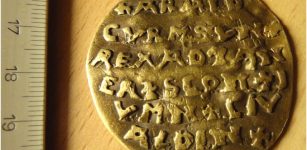 Mysterious Golden Curmsun Disc And Its Connection To King Harald Bluetooth And The Legendary Jomsvikings
Artifacts | Apr 13, 2022
Mysterious Golden Curmsun Disc And Its Connection To King Harald Bluetooth And The Legendary Jomsvikings
Artifacts | Apr 13, 2022

